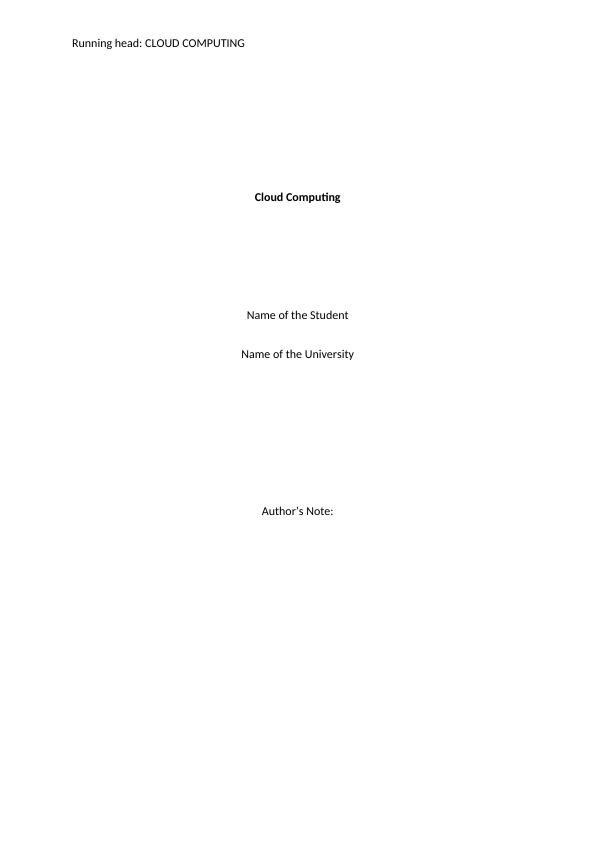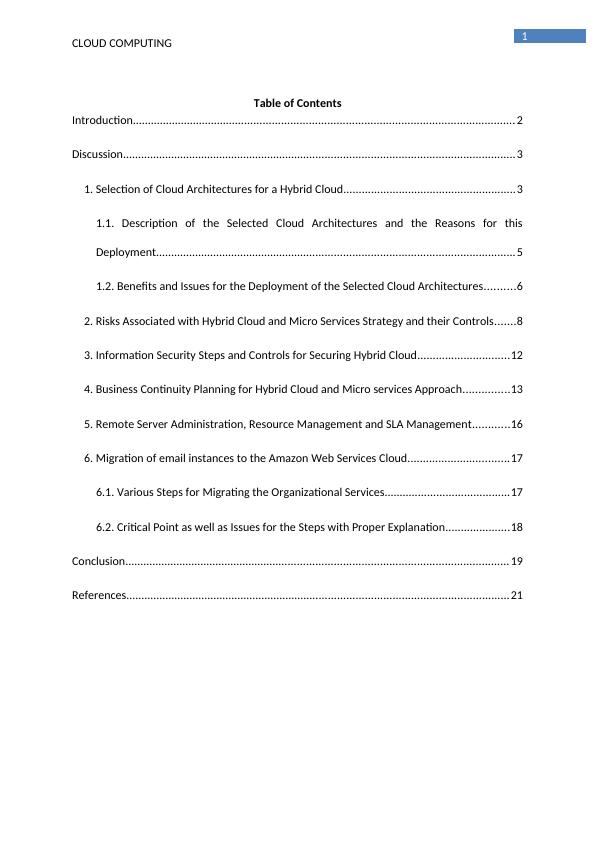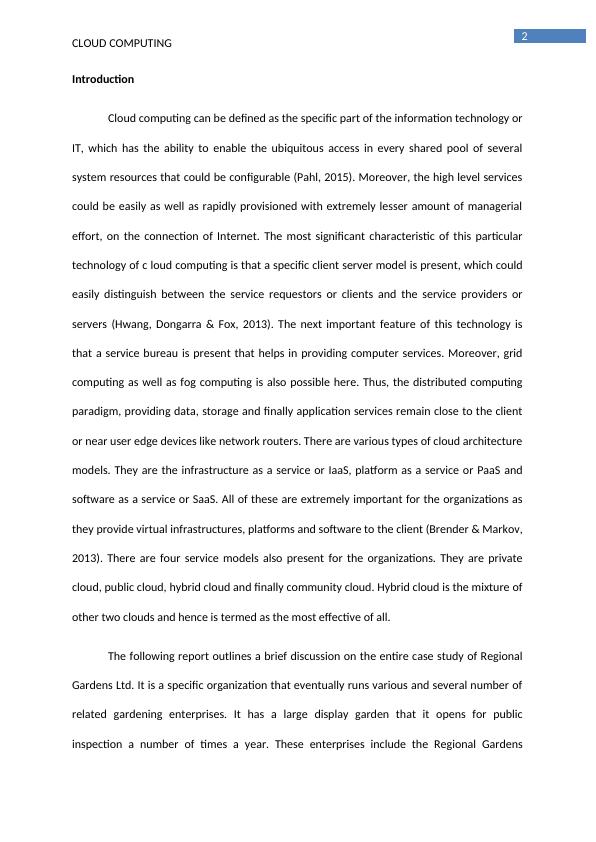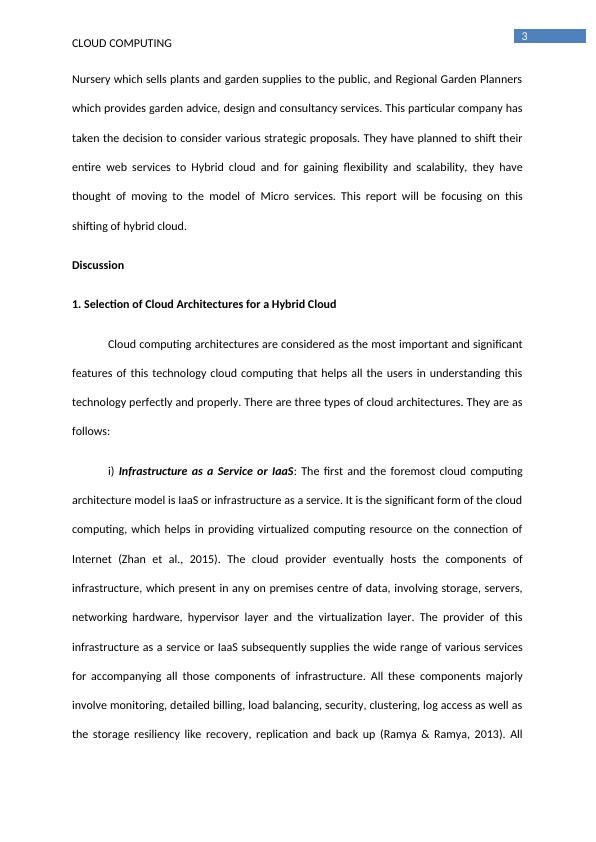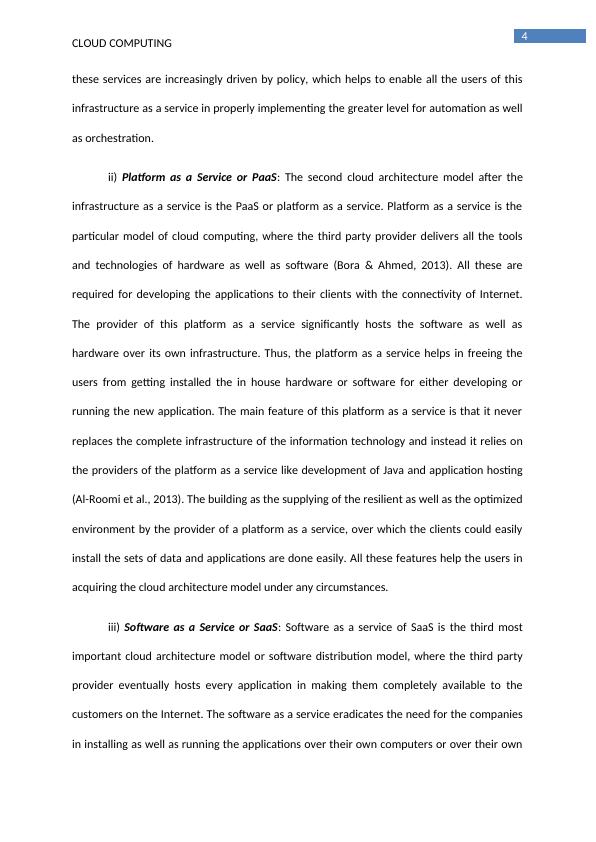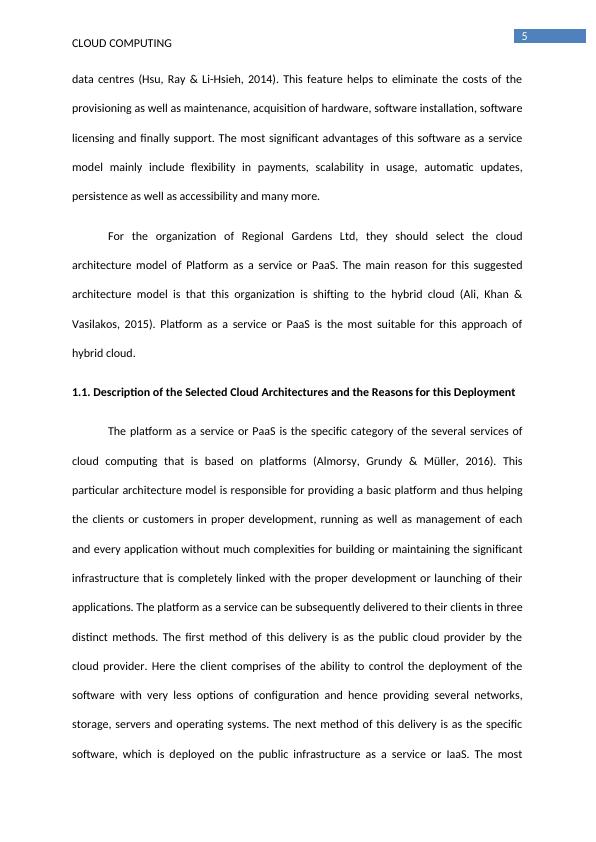Cloud Computing: Selection of Cloud Architectures for a Hybrid Cloud
Regional Gardens Ltd is considering a strategic proposal to update their data storage infrastructure, move their web services to the cloud, and migrate their Line of Business applications.
26 Pages7544 Words430 Views
Added on 2023-06-11
About This Document
This report outlines a brief discussion on the entire case study of Regional Gardens Ltd. It is a specific organization that eventually runs various and several number of related gardening enterprises. It has a large display garden that it opens for public inspection a number of times a year. The report focuses on the shifting of hybrid cloud and the selection of cloud architectures for a hybrid cloud. The benefits and issues for the deployment of the selected cloud architectures are discussed. Risks associated with hybrid cloud and micro services strategy and their controls are also discussed.
Cloud Computing: Selection of Cloud Architectures for a Hybrid Cloud
Regional Gardens Ltd is considering a strategic proposal to update their data storage infrastructure, move their web services to the cloud, and migrate their Line of Business applications.
Added on 2023-06-11
ShareRelated Documents
End of preview
Want to access all the pages? Upload your documents or become a member.
Cloud Computing: Selection of Cloud Architectures for a Hybrid Cloud and Risks Associated with Hybrid Cloud and Microservices Strategy
|21
|5740
|256
Cloud Computing for Regional Gardens: Benefits, Risks and Mitigation Strategies
|20
|4796
|398
Cloud Computing - Assignment PDF
|13
|809
|159
Cloud Computing Strategy for Regional Gardens Limited
|18
|5931
|187
(PDF) Cloud computing basics
|21
|2970
|129
The Migration to the Cloud - PDF
|9
|1882
|268

